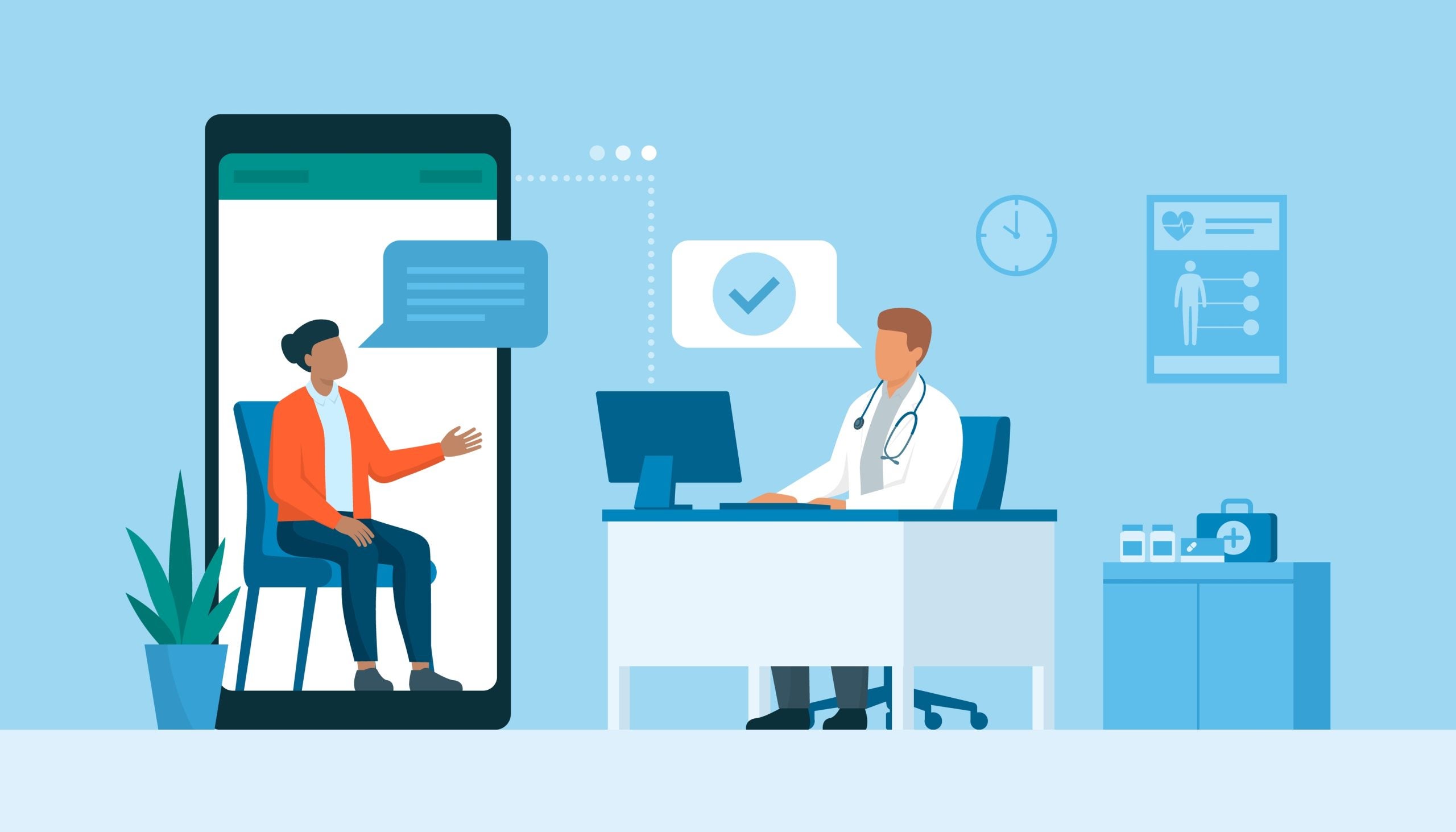
In the world of pharmaceuticals and biotechnology, the journey from research and development to delivering life-saving medications is a complex and delicate process. At the heart of this journey lies patient communication – the exchange of critical information between healthcare providers, pharmaceutical companies, and the individuals whose lives depend on the treatments provided.
However, patient communication in pharma and biotech is not what it used to be. It’s continually evolving, driven by the forces of technology, regulation, and changing patient expectations. In this article, we’ll explore the patient communication risks that now confront life science organisations and provide insights into how to navigate them effectively.
The digital transformation of patient communication
Imagine a scenario where a patient receives a timely alert on their smartphone reminding them to take their medication. Such a reminder could significantly improve adherence to treatment, a challenge that has long plagued healthcare. This is just one example of the transformative power of digital patient communication.
In recent years, the pharmaceutical and biotech industries have been embracing digital channels to engage patients more effectively. From telehealth consultations to medication adherence apps, the possibilities are vast. But with these innovations come evolving risks that demand our attention.
Example 1: Remote monitoring for chronic conditions
For patients with chronic conditions like diabetes, remote monitoring has become a game-changer. Devices that track blood glucose levels can transmit data to healthcare providers in real-time, allowing for immediate adjustments to treatment plans. This is a remarkable advancement, but it also raises data privacy and security concerns.
Example 2: Personalised medication apps
Pharmaceutical companies are developing apps that provide patients with personalised medication information and reminders. While this enhances patient engagement, it also raises questions about data security and consent. Who has access to this sensitive data, and how is it being used?
Statistics: The data privacy imperative
According to a recent survey by the Ponemon Institute, 73% of healthcare organisations have experienced a data breach in the past year. This is an alarming statistic that underscores the critical need for robust data privacy measures in the healthcare sector.
Even more so when you consider this in context with a recent research report on patient perspectives by Cassie, which found that 72% of consumers worry about the potential misuse of their health information by external entities.
Eight communication risks and actions
1. Data privacy regulations: The regulatory maze
Pharma and biotech companies operate under a web of data privacy regulations, with HIPAA in the United States and GDPR in Europe at the forefront. Non-compliance can result in substantial fines, making it crucial to stay updated and adapt compliance strategies. US states are continuing to form regulatory guidance, creating a patchwork of rules to follow that will change the way you can collect data and communicate with consumers and third parties.
Action: Regularly review and update data privacy policies, and ensure your team understands the latest regulations and their implications for patient communication.
2. Legacy systems and disconnected data
Many organisations in these sectors still rely on legacy systems that can’t keep up with the demands of modern patient communication. Disconnected data sources lead to inefficiencies and inaccuracies, putting patient data at risk.
Action: Invest in modern data management systems with robust integration capabilities to streamline data access and communication.
3. Consent management challenges
Obtaining and managing patient consent is central to data privacy compliance. However, manual or disjointed consent management processes can leave organisations vulnerable.
Action: Implement automated consent management systems that allow you to efficiently track and demonstrate compliance with evolving regulations.
4. Security threats loom large
With the growing digitisation of healthcare data, the risk of data breaches and cyberattacks is ever-present. Protecting patient data from potential threats should be a top priority.
Action: Strengthen your cybersecurity measures, conduct regular security audits, and educate your staff about data security best practices.
5. User experience and patient expectations
Patients today have higher expectations regarding the use of their data and the quality of communication they receive. Poorly managed patient communication can damage trust and patient satisfaction.
Action: Focus on delivering clear and transparent communication to patients. Engage in patient education on data use and provide user-friendly channels for communication and consent management.
6. Cross-border data transfer complexities
Global operations often require the transfer of patient data across borders, adding complexity to compliance efforts. Understanding international data protection laws is essential.
Action: Stay informed about the laws and regulations governing cross-border data transfer and implement measures to ensure compliance.
7. Emerging technologies’ impact
The adoption of cutting-edge technologies like AI and telehealth introduces new data privacy risks. Ensuring responsible and compliant use of these technologies is paramount.
Action: Develop guidelines for the ethical use of emerging technologies in patient communication, and regularly audit their data practices.
8. Litigation and reputation risks
Non-compliance with data privacy regulations can lead to legal action and damage a company’s reputation. Awareness and vigilance are key.
Action: Foster a culture of data privacy within your organisation and develop comprehensive strategies for risk mitigation.
Progress: A double-edged sword
The pharmaceutical and biotechnology sectors are operating in an environment of rapidly evolving patient communication risks. It brings unprecedented opportunities to enhance patient care, but it also poses evolving risks to patient privacy and data security.
To succeed in this landscape, organisations must prioritise data privacy and compliance while ensuring a positive user experience.
By adopting modern data and consent management systems, staying informed about regulations, and focusing on transparent, patient-centric communication, companies can navigate these challenges and maintain patient trust in an ever-changing world.
Remember, the health and well-being of patients depends on the responsible handling of their data. Stay committed to safeguarding their privacy while advancing medical science and patient care.


